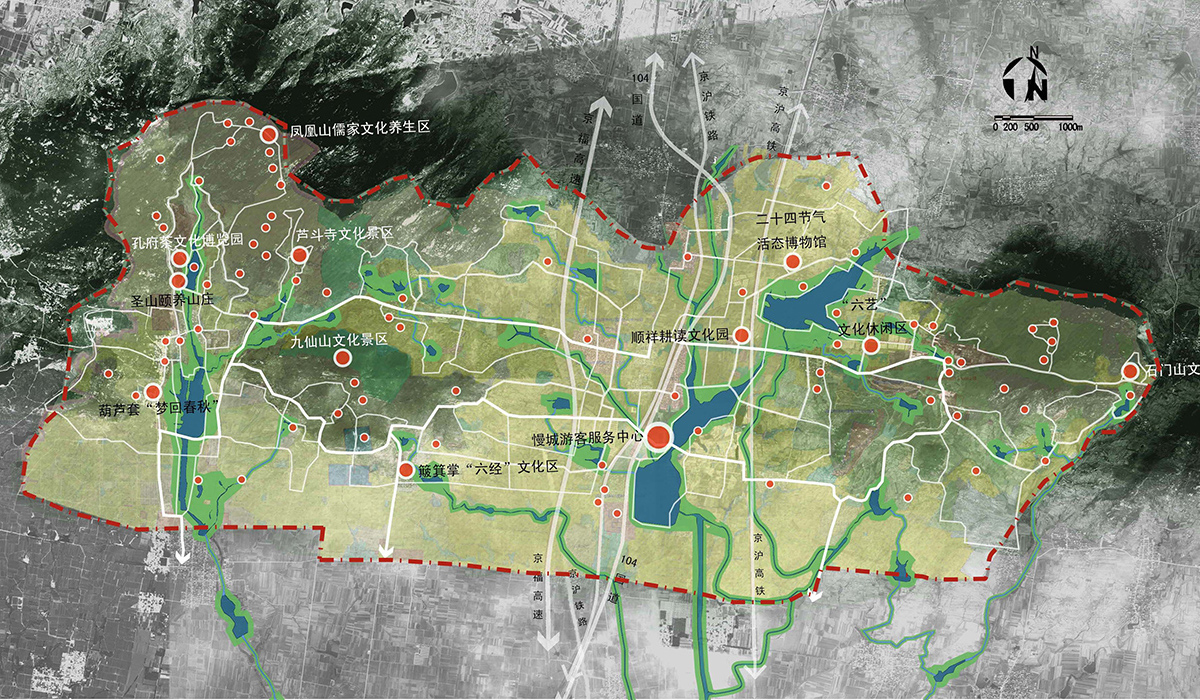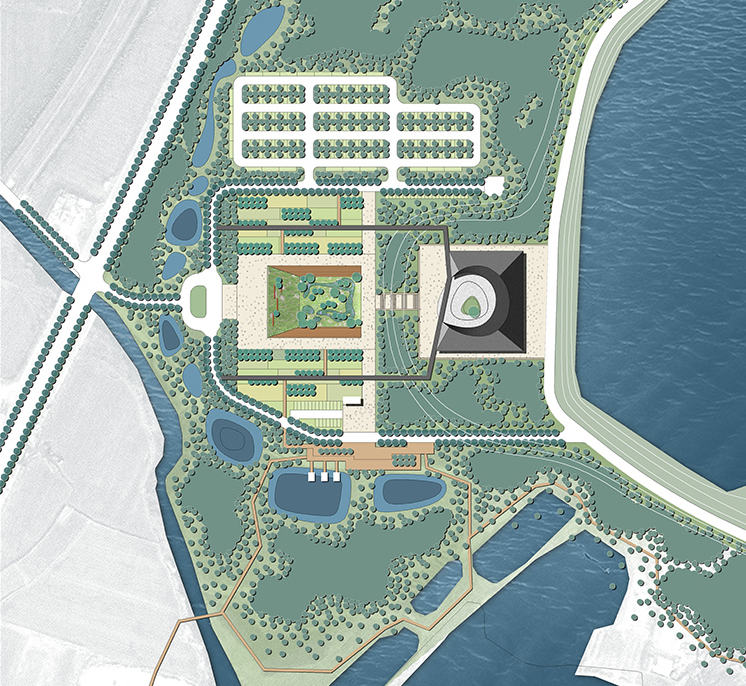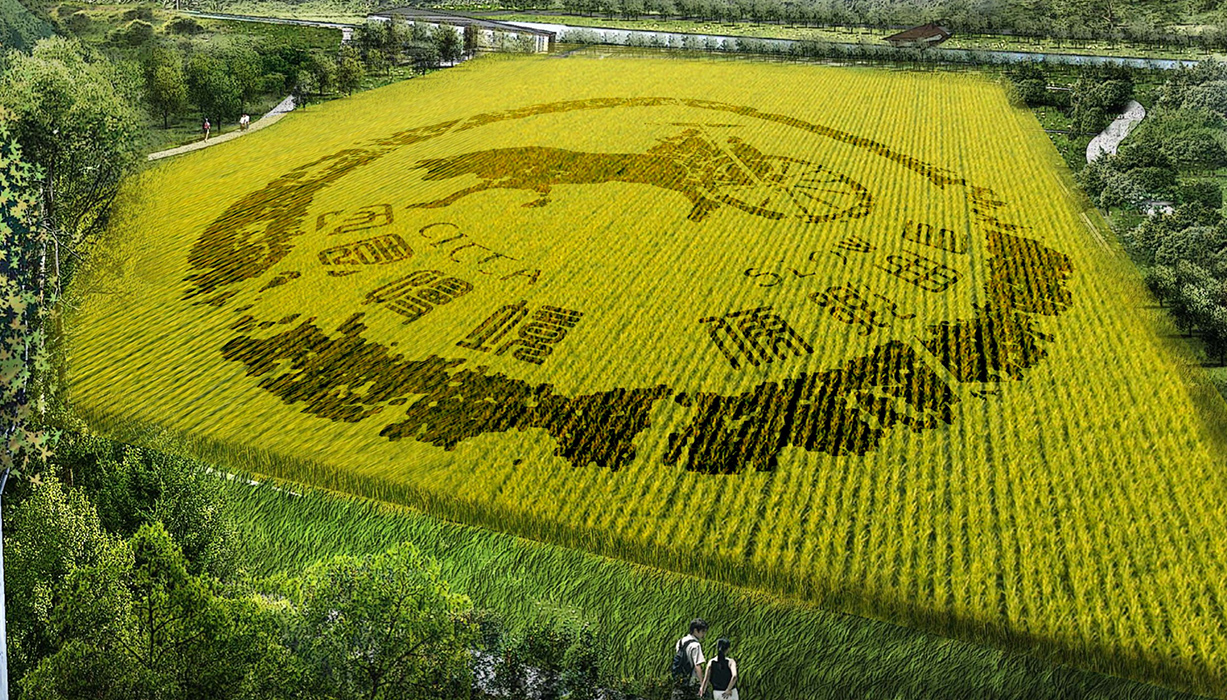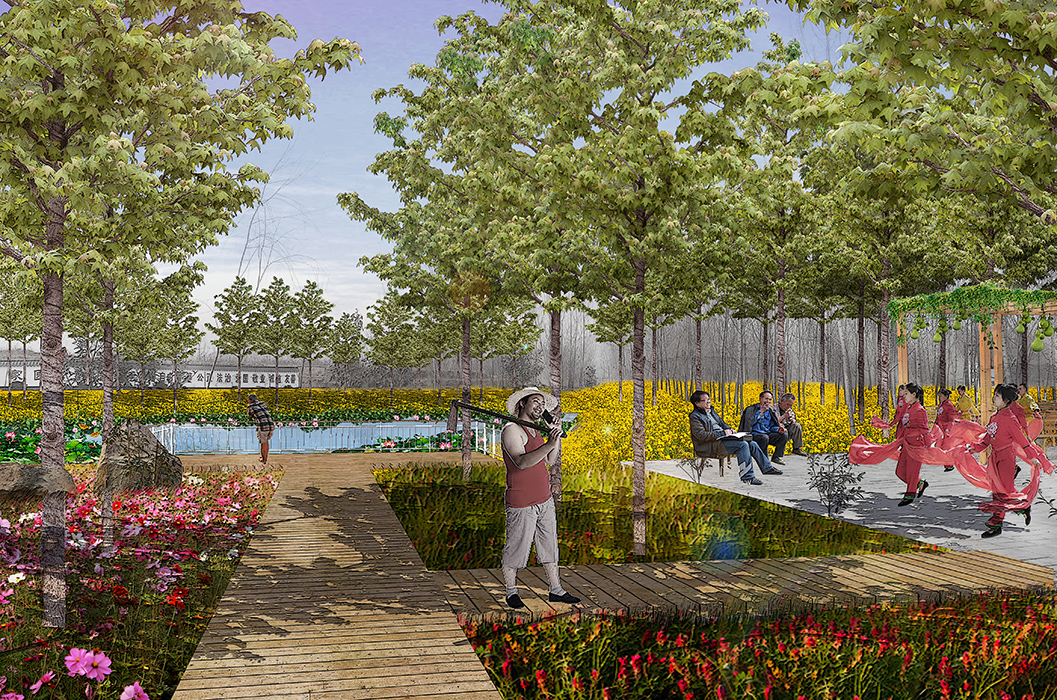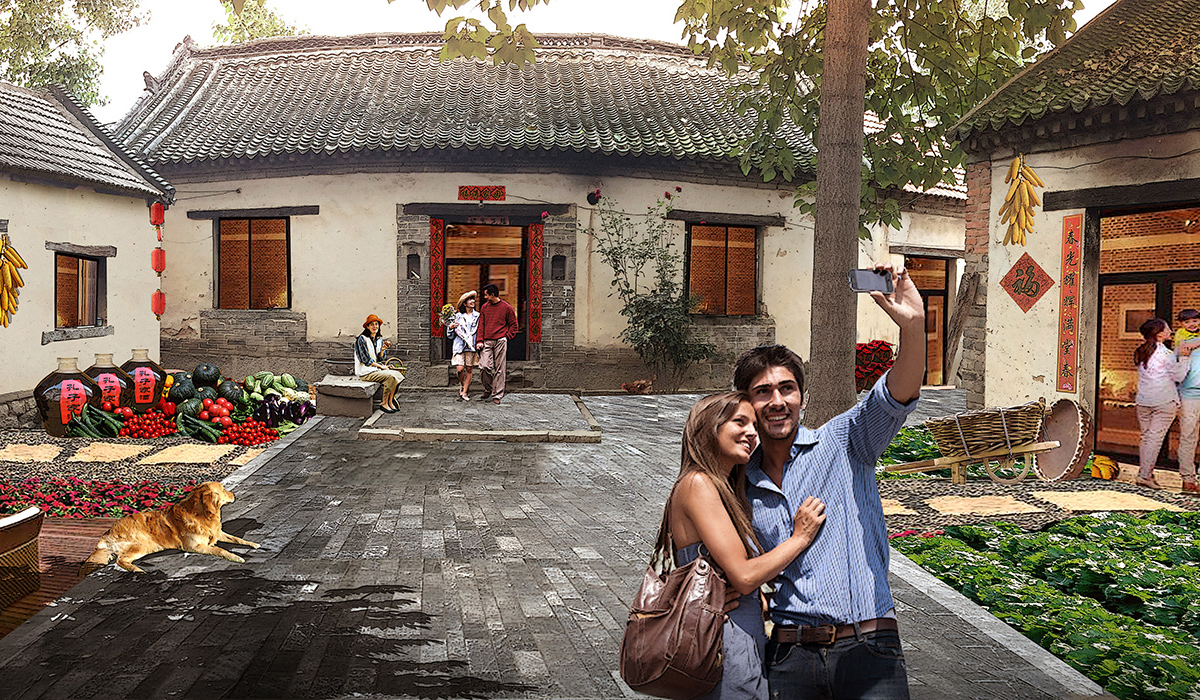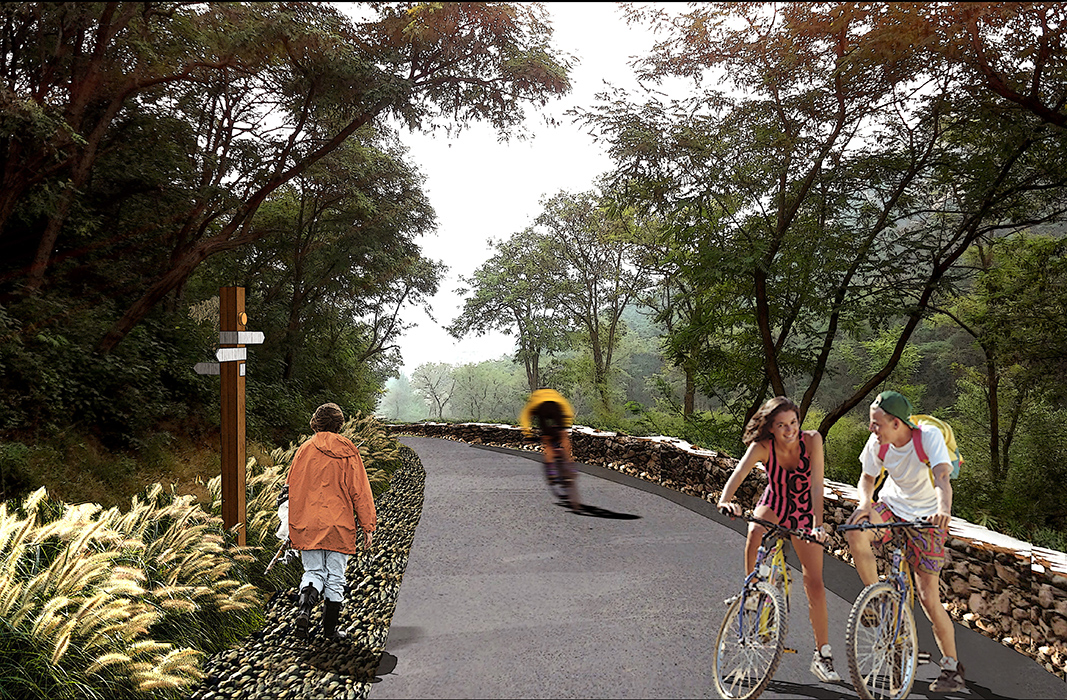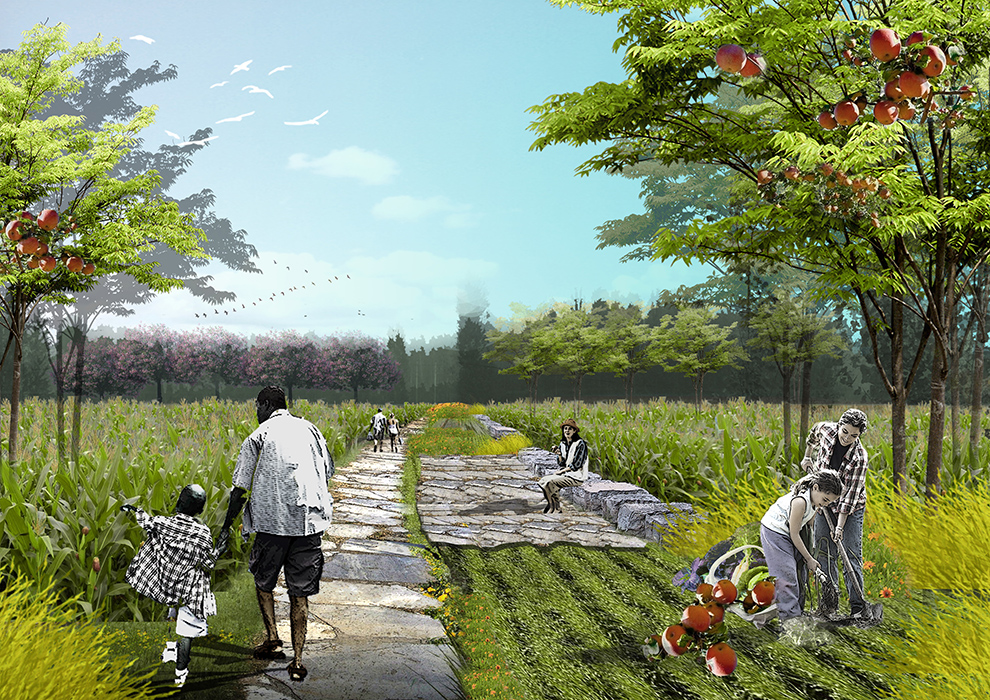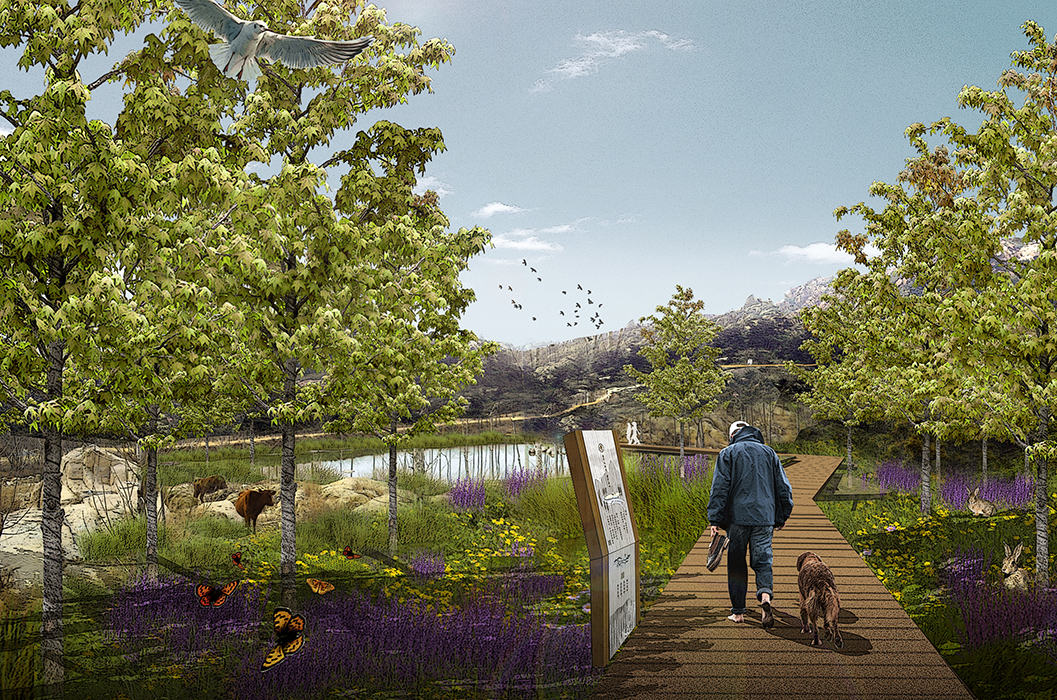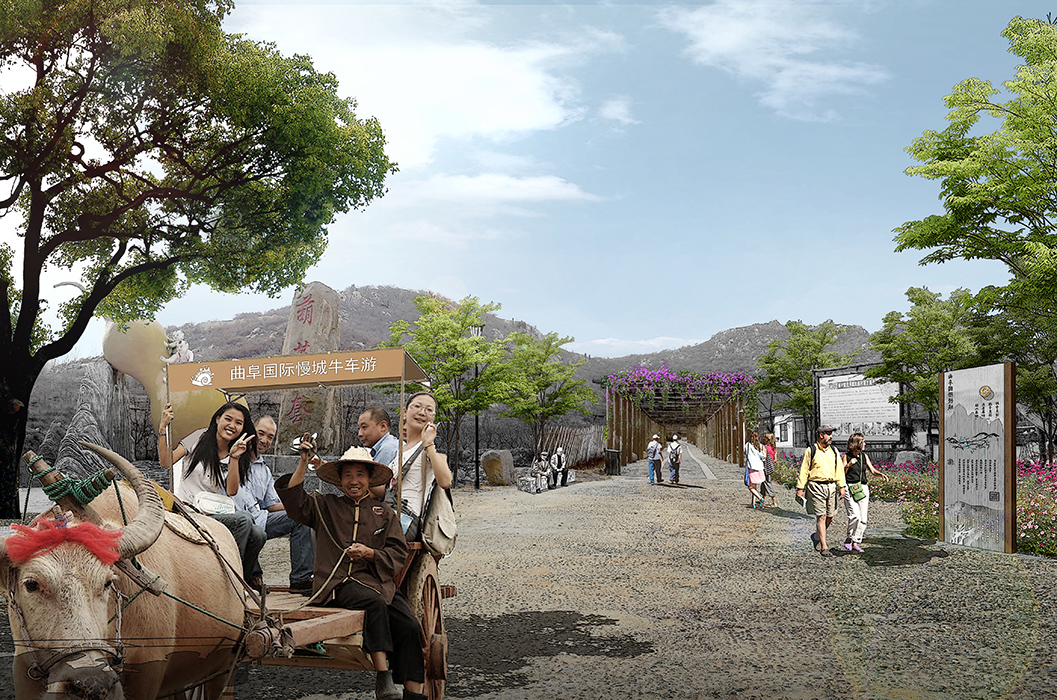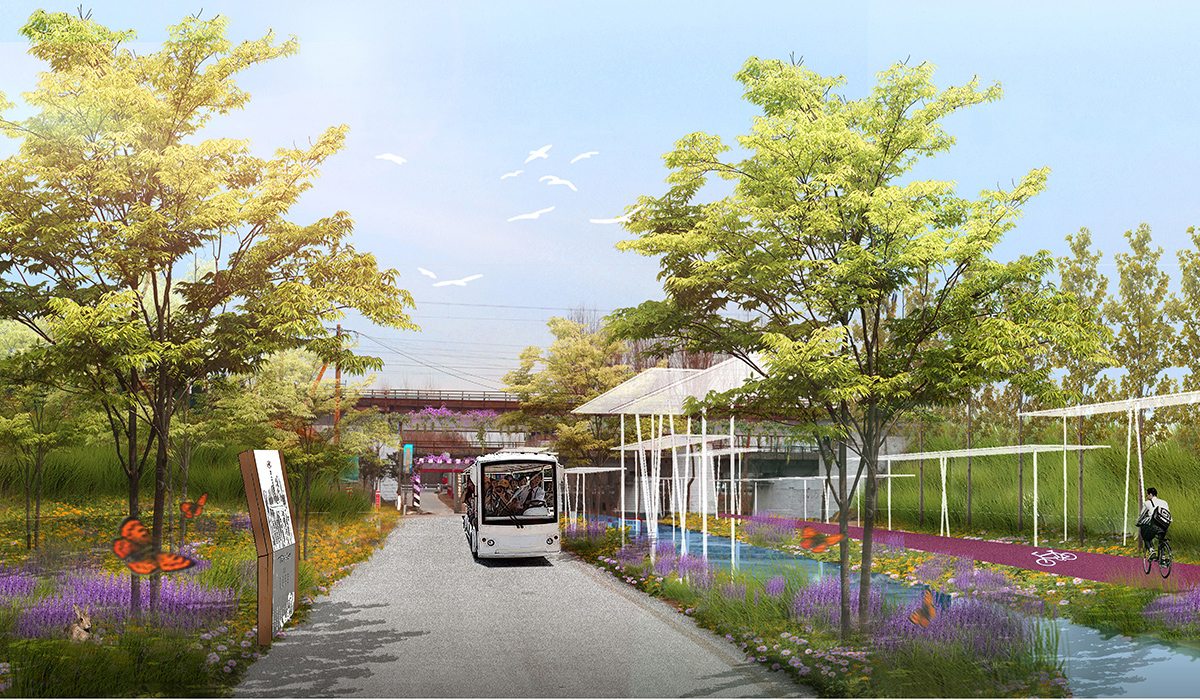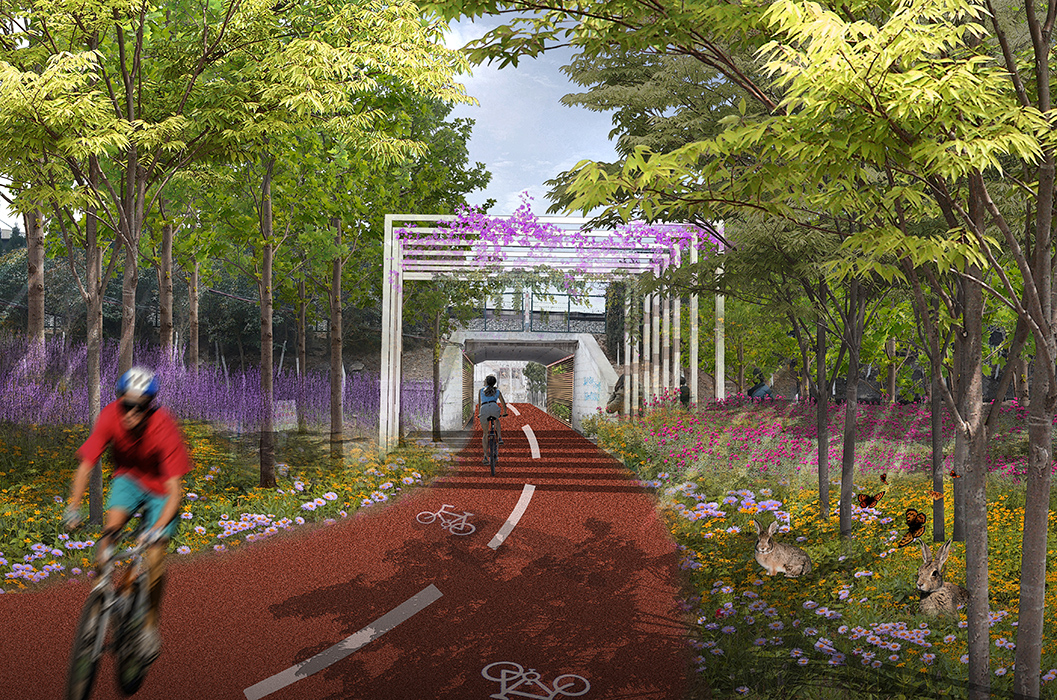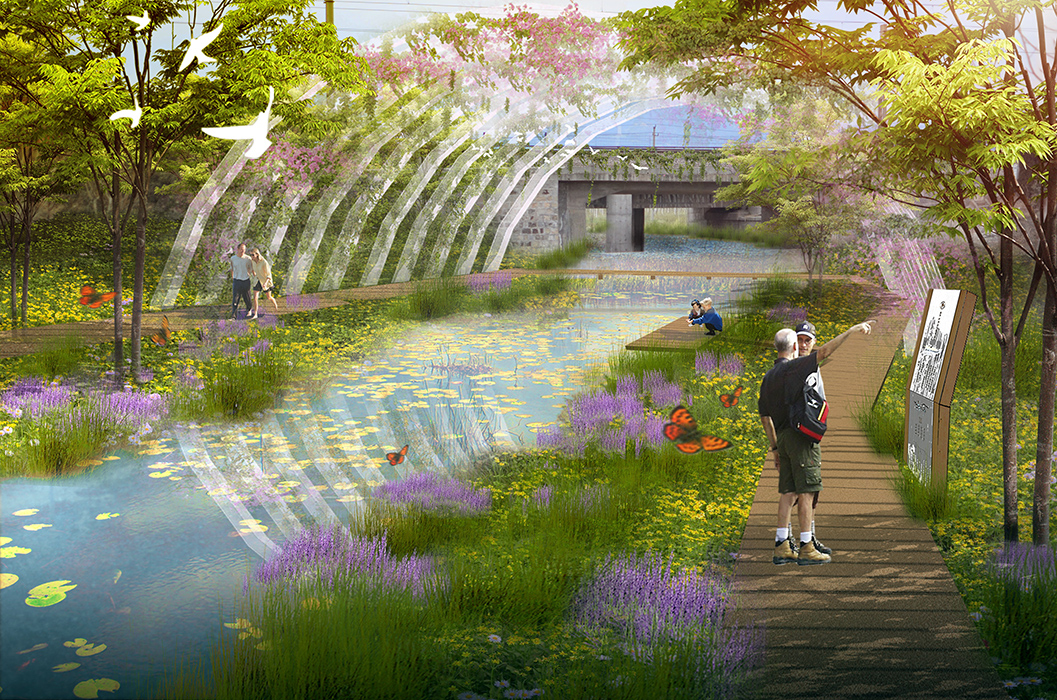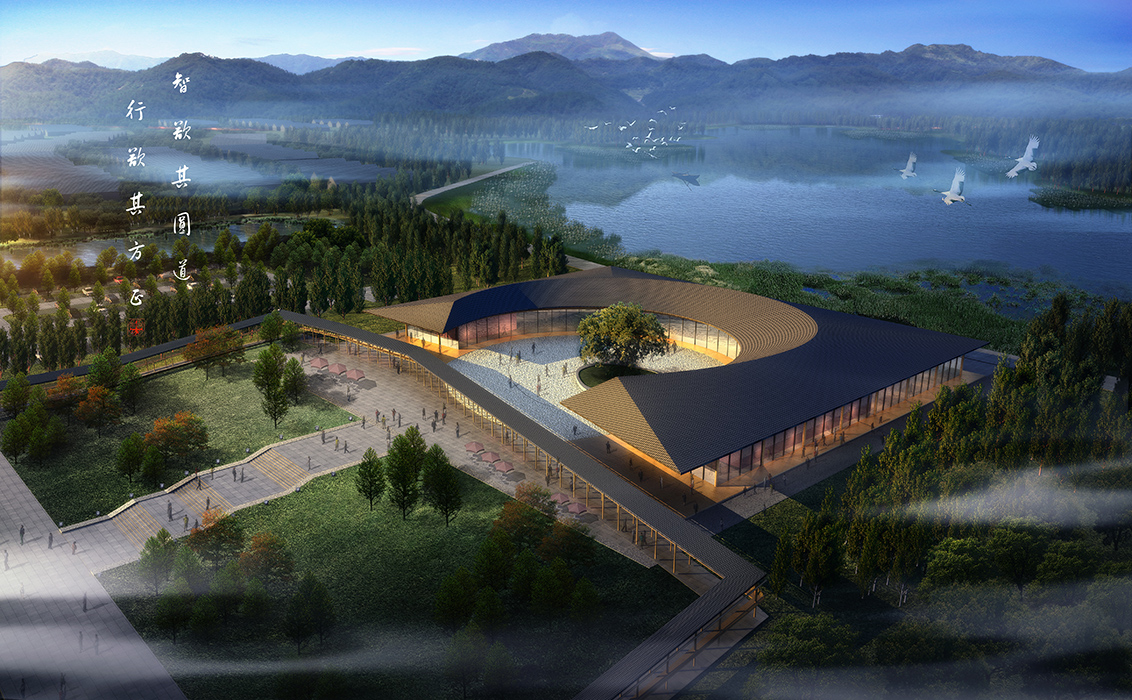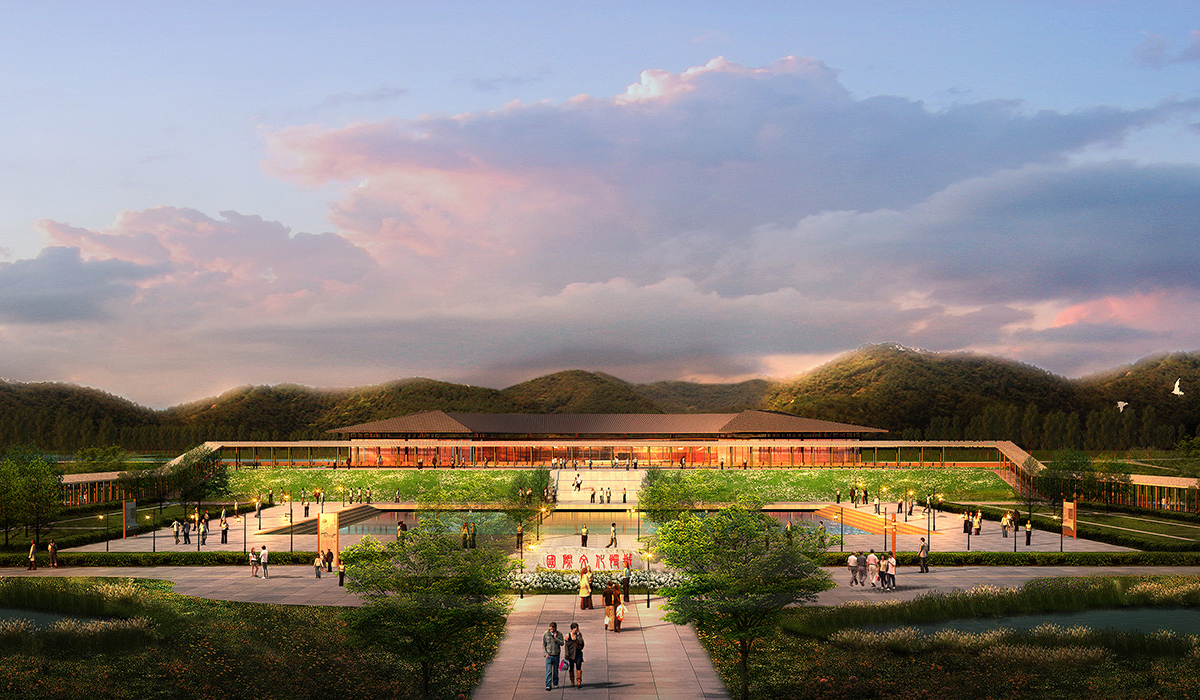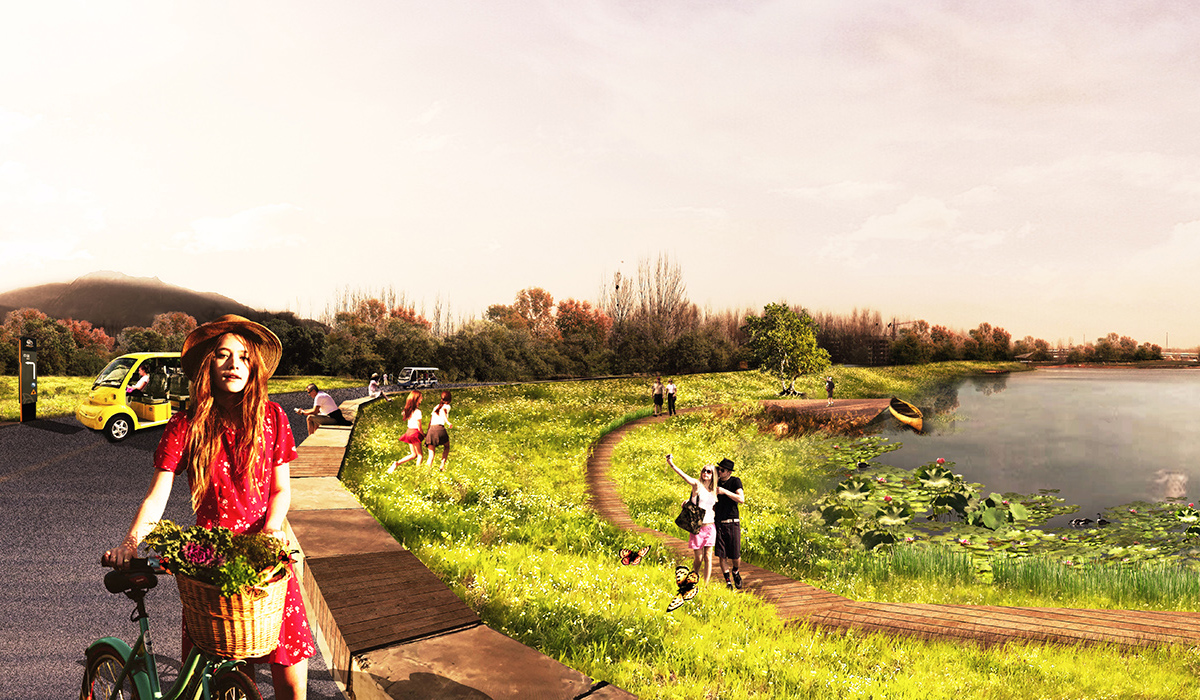Qufu Cultural International Slow City Plan
Project Information
- Project Location:
- China Qufu, Shandong
- Project Scale:
- 263.2 Square Kilometers
- Design Time:
- September 2014
- Client:
- Qufu City Tourism Bureau (Qufu City Planning Bureau)
Project Profile
1. Project Statement
Qufu, known as the Oriental Holy City and the world's Confucian center, boasts outstanding cultural resources. In recent years, rural tourism in Qufu, themed "Holy Land Village Tour," has been flourishing. The plan proposes a new direction for Qufu's rural tourism development, integrating natural landscapes, rural fields, and the ambiance of village life to achieve a harmonious unity of ecological and cultural experiences. The goal is to move away from traditional "fast-food" culture and transition from a ticket-based economy to a leisure experience economy. Qufu advocates for a slow-paced lifestyle, aiming to create a slow-travel city. Wucun Town and the northern part of Shimenshan Town will be jointly developed into the "Cultural Slow City of Northern Jiangsu," becoming China's third international slow city after Nanjing Gaochun Yaxi International Slow City and Guangzhou Meizhou Yanyang International Slow City.
2. Objective and Challenge
Qufu's tourism has long relied on the "Three Confucius Sites" (San Kong) for revenue, leading to a stagnant tourism development dominated by these sites. Additionally, the underdeveloped rural economy significantly hampers regional development, and the phenomenon of "hollow villages" is widespread. The slow city concept can significantly promote culture, tourism, and livelihood improvement.
The formation of a slow city requires cultivating a regional "slow" atmosphere. The plan divides the slow city development into three hierarchical systems: the slow city, the slow area, and the slow capital. These correspond to Jiuxian Mountain - Shimenshan International Slow City, key rural tourism towns (Wucun Town, Shimenshan Town, and Nishan Town), and Qufu City. These layers and the various slow cities will be interconnected through a networked slow-travel system, forming an integrated regional slow city system.
3. Design Strategy
Based on thematic studies and case analyses of international slow cities, the plan aims to develop the Qufu Cultural International Slow City into China's first cultural international slow city, integrating cultural tourism, ecological experiences, leisurely living, and creative industries. The Qufu Cultural International Slow City will epitomize Confucian culture and stand as the world's unique Confucian cultural slow city. While the only two slow cities in China are in Jiangnan and focus on ecological experiences, Qufu will leverage its strong cultural heritage to highlight cultural experiences, serving as a window for the world to deepen its understanding of Confucianism and traditional Chinese culture.
The Qufu Cultural International Slow City will also enhance the sequence of Confucian tourism experiences, from "Worshiping Confucius" at the Three Confucius Sites to "Learning Confucius" at Nishan, and ultimately becoming a "Confucian Guest" in the slow city. The slow city will emphasize the features of "slow" and "Confucian," integrating the slow-living concept into its core elements (mountains, water, fields, villages, roads, etc.) and using Confucian values to shape its spiritual essence.
Qufu Party Secretary Li Changsheng proposed that the slow city construction should be "based on pastoral scenery, village renovation, people-centered Confucianism, landlord economy, focusing on the two mountains, and transportation as the link." The plan distills four key systems for slow city construction: ecological, living, tourism, and transportation systems. "Slow" will be the outward expression of these systems, while "Confucian" will be the core to explore their soul and essence. The construction of these systems will shape the spatial development model of the Qufu Cultural International Slow City:
3.1 Healthy and Beautiful Ecological System: Establish ecological water systems, mountain protection systems, and agricultural systems to build a healthy ecological foundation and beautiful landscape.
3.2 Beautiful, Prosperous Villages and Confucian-Inspired Living System: Propose targeted renovation measures for villages based on their current conditions, improving and optimizing the physical space while enriching rural social and cultural life.
3.3 One Slow City Loop + Multiple Slow Travel Routes + Multilevel Transfer System: Advocate slow travel and limit motor vehicles. The slow city loop allows motor vehicles, while other routes are for slow travel. Transfer centers will be set up at the intersections of the loop and through roads, transfer points at connections between the slow travel system and the loop, and service points within the slow travel system.
3.4 In-depth Confucian Cultural Experience Tourism System: Plan Confucian cultural theme areas, enhancing existing villages and projects around these themes while planning other tourism projects to enrich cultural experiences and improve tourism support services.
4. Conclusion
The plan, supported by Qufu's rural tourism and key towns (Wucun Town, Shimenshan Town, Nishan Town), focuses on the Jiuxian Mountain - Shimenshan International Slow City. It aims to guide the development of rural tourism in Qufu, enhance its overall tourism competitiveness, create a culturally distinctive international slow city, and explore new paths for urbanization.
